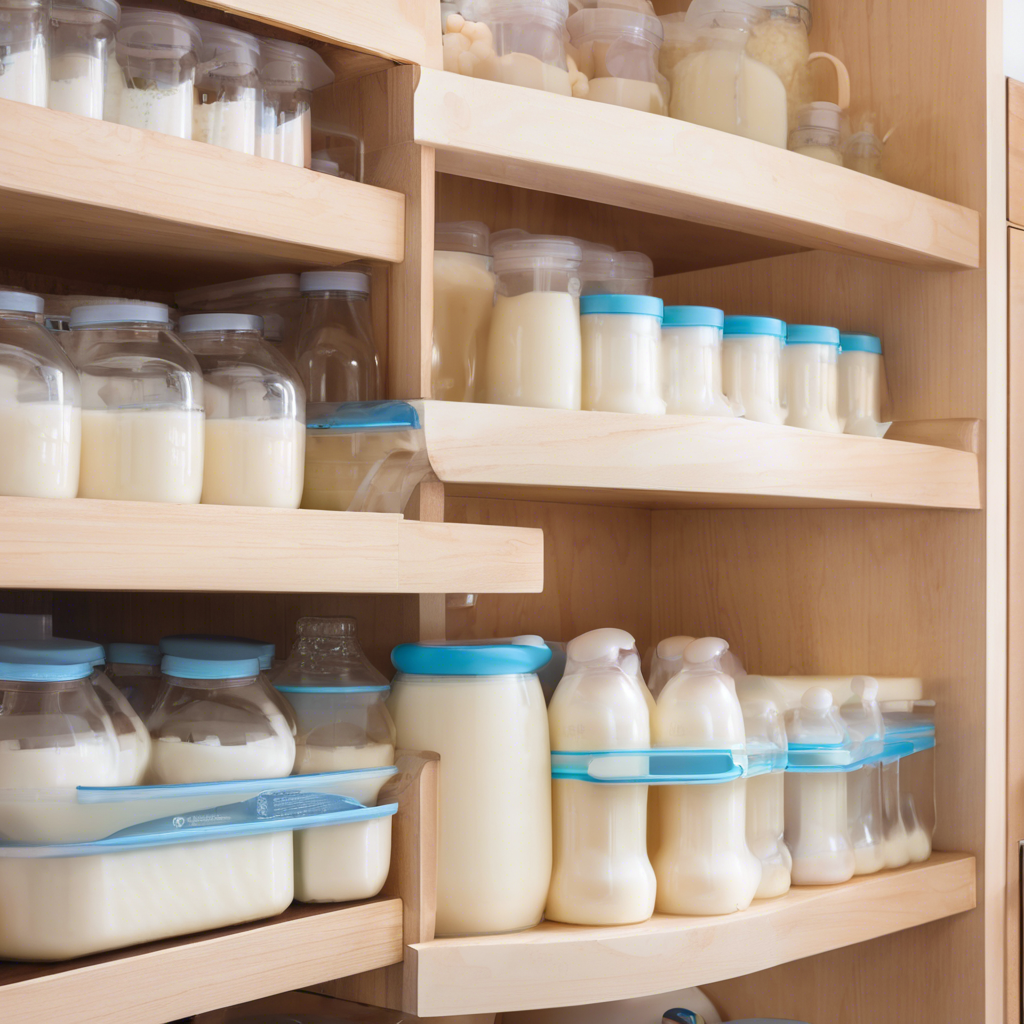Breastfeeding is a beautiful and natural way to nourish a baby, but for many busy moms, storing breast milk properly is essential. Whether you’re returning to work, running errands, or simply need a break, safe breast milk storage ensures that your baby receives all the necessary nutrients while preventing contamination. Understanding the right techniques for collecting, storing, and thawing breast milk can make a significant difference in your baby’s health and well-being.
Freshly pumped breast milk can stay at room temperature (up to 77°F or 25°C) for about four hours. If the temperature is higher, it should be used within two hours. It’s always best to store milk in a clean, airtight container to reduce the risk of bacterial growth. Glass or BPA-free plastic bottles with tight-sealing lids are the best choices. Special breast milk storage bags are another convenient option since they can be labeled and easily stored in the refrigerator or freezer. However, regular plastic bags are not recommended, as they may break or leak.
Refrigeration is an excellent way to store breast milk for short-term use. Breast milk can be kept in the refrigerator at 39°F (4°C) for up to four days. It’s crucial to place the milk at the back of the refrigerator, where the temperature remains the most stable. Avoid storing it in the door, as frequent opening and closing can cause temperature fluctuations. If you plan to use the milk within a few days, refrigeration is the most convenient and practical option.
For long-term storage, freezing breast milk is the best solution. Breast milk can be safely stored in a standard freezer for up to six months and in a deep freezer (below 0°F or -18°C) for up to twelve months. To save space and make thawing easier, store milk in small portions, such as two to four ounces per bag or bottle. Label each container with the date of pumping to ensure older milk is used first. It’s also helpful to leave some space in the storage container since breast milk expands when frozen.
Thawing frozen breast milk requires careful handling to maintain its nutrients and prevent contamination. The safest method is to place the frozen milk in the refrigerator overnight. If you need it sooner, you can run the sealed container under warm water or place it in a bowl of warm water. Avoid using hot water or a microwave, as these can create hot spots and destroy essential nutrients. Once thawed, breast milk should be used within 24 hours if stored in the refrigerator and should never be refrozen.
When feeding your baby stored breast milk, gently swirl the bottle or bag to mix the separated layers of fat and liquid. Avoid shaking vigorously, as this can break down some of the beneficial proteins in the milk. If your baby does not finish a bottle of breast milk, it should be discarded within two hours to prevent bacterial contamination. Never reuse leftover milk that has been in contact with your baby’s saliva.
Pumping breast milk properly is just as important as storing it safely. Always wash your hands before expressing milk, and ensure that all pump parts and storage containers are clean and dry. Sterilizing pump parts at least once a day can help reduce the risk of contamination. If using a manual or electric pump, follow the manufacturer’s guidelines for cleaning and maintenance.
For moms on the go, portable coolers with ice packs are a great way to keep breast milk fresh. Milk can be safely stored in an insulated cooler with frozen ice packs for up to 24 hours. If you’re traveling, make sure to transfer the milk to a refrigerator or freezer as soon as possible. Many airports and workplaces offer lactation rooms equipped with refrigeration, making it easier to store milk while away from home.
Understanding the signs of spoiled breast milk is essential for your baby’s safety. Fresh breast milk typically has a mild, sweet scent, while spoiled milk may have a sour or soapy odor. The appearance of breast milk can vary, but if it has an unusual color or consistency, it’s best to discard it. If you are ever unsure whether milk is still good, it’s safer to throw it away rather than risk your baby’s health.
Safe breast milk storage is a critical aspect of breastfeeding for busy moms. By following proper storage guidelines, you can ensure that your baby continues to receive the essential nutrients needed for healthy growth and development. Whether refrigerating, freezing, or transporting milk, taking the right precautions will help you maintain its quality and safety.

